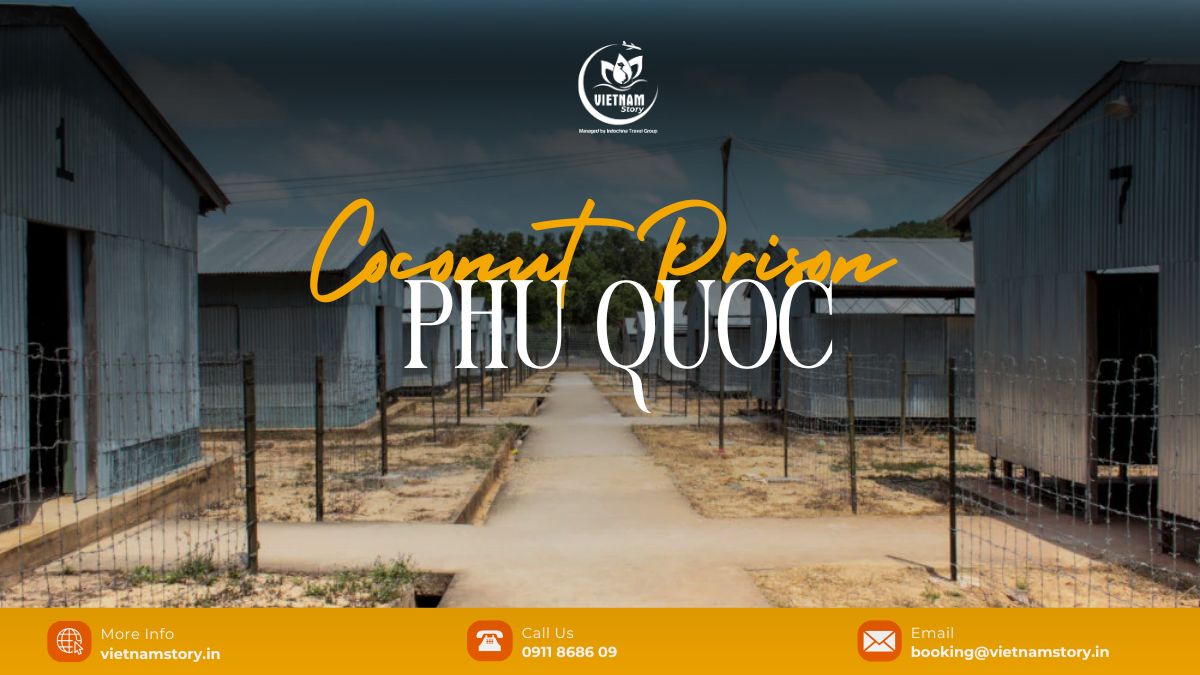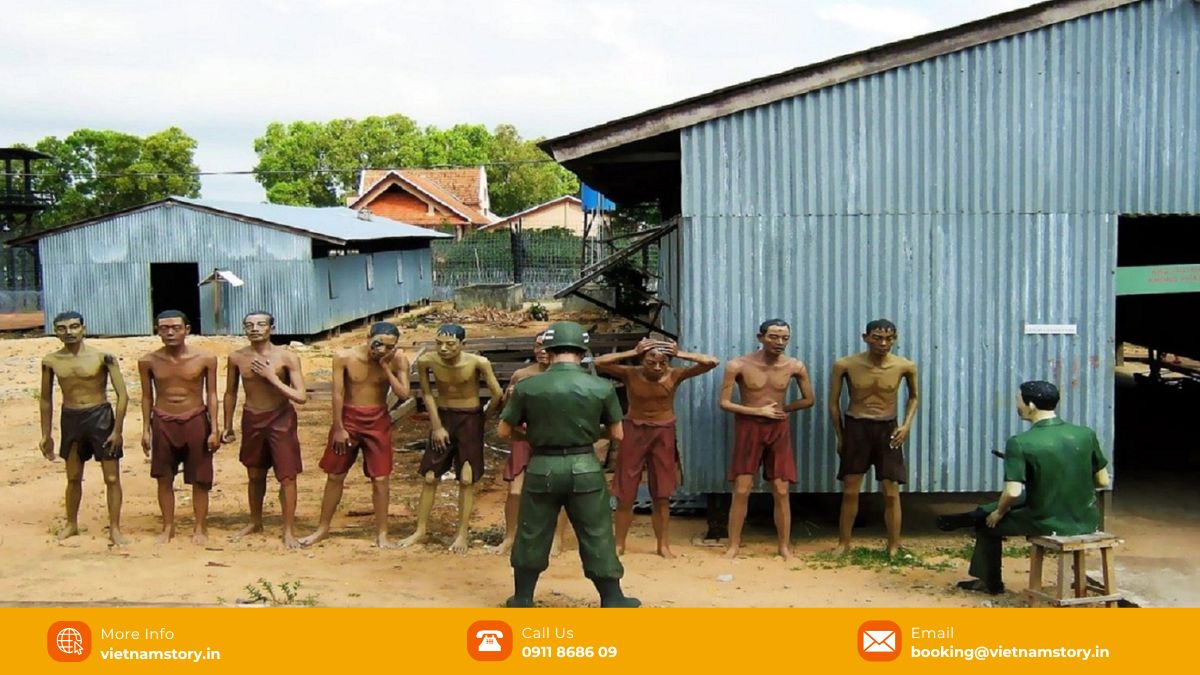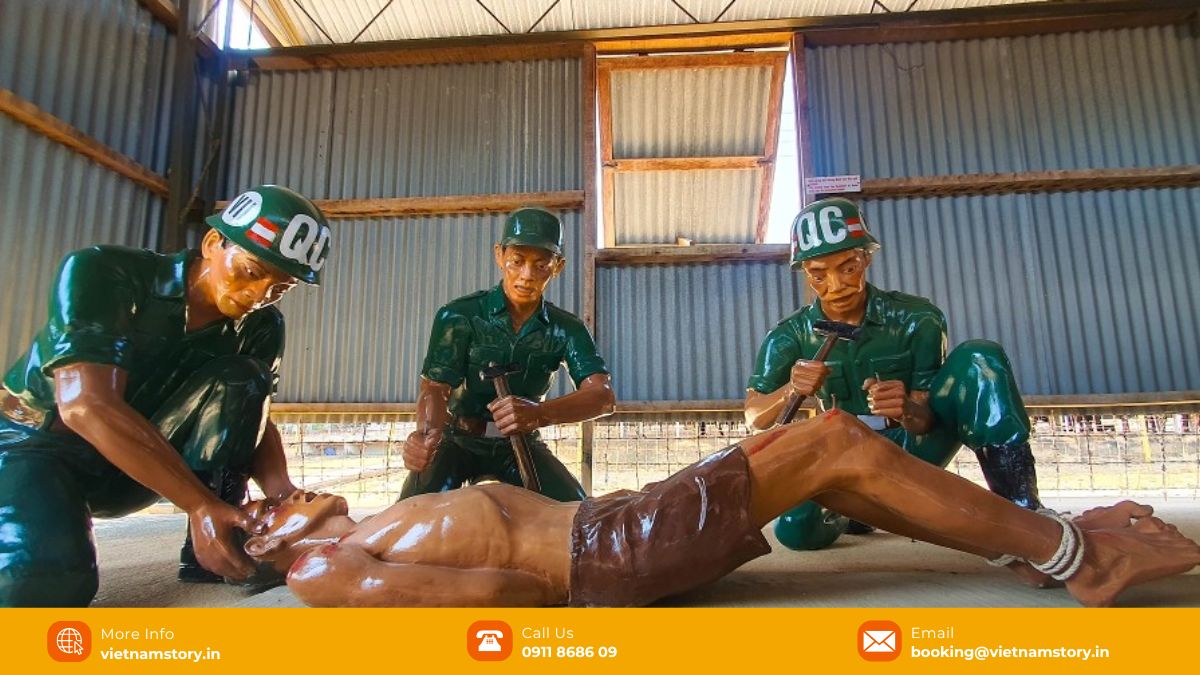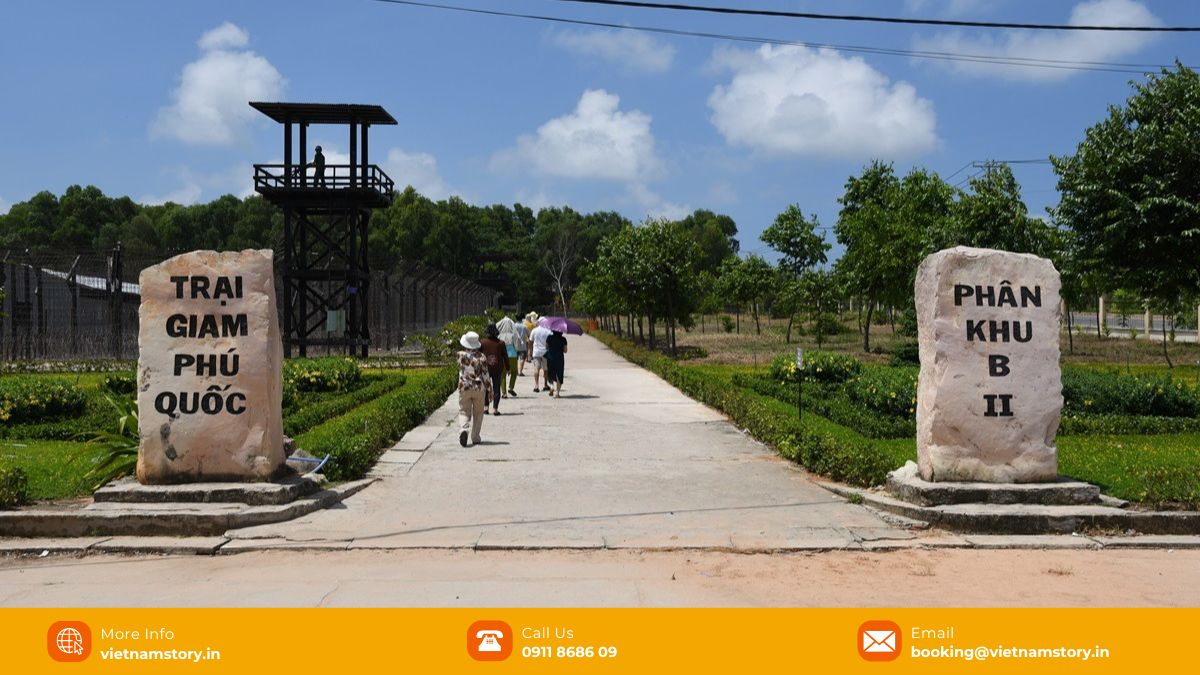Phu Quoc Prison, commonly known as Coconut Prison (Nha Tu Cay Dua), is one of Vietnam’s most significant national historical sites. Originally established by French colonialists, it was later expanded and notoriously utilized during the Vietnam War to incarcerate and torture political prisoners. Today, it stands as a museum and memorial, documenting the brutal conditions and indomitable spirit of the Vietnamese soldiers who were held there. This guide provides a comprehensive overview of the site’s history, what to expect during a visit, and practical information for travelers.

About Coconut Prison Phu Quoc
Coconut Prison (Nha Tu Cay Dua) is a historical museum in Phu Quoc that preserves the site of a notorious prison camp from the Vietnam War. Through a series of reconstructed barracks, outdoor exhibits, and graphic mannequin displays, it tells a solemn story of suffering and an indomitable will to survive.
It is located at 350 Nguyen Van Cu Street, An Thoi Ward, Duong Dong Town, in the southern part of Phu Quoc island. Getting to Coconut Prison is quite simple. It’s located about 29 kilometers south of Duong Dong town, and the easiest way to get there is by taking a taxi or a Grab. For those who are more adventurous and comfortable on a scooter, it’s also a straightforward drive. From the center of town, you’ll just need to follow the main DT46 road south. The route is well-paved, and you’ll see signs guiding you towards the An Thoi area, where the prison is located. It’s also a very common stop on most organized South Phu Quoc day tours, which can be a great, hassle-free way to visit.

- Opening hours: The prison is generally open from 8:00 AM to 5:00 PM every day, but they often close for a lunch break between 11:30 AM and 1:30 PM.
- Visiting time: 1-2 hours
- Ticket price: Here is a wonderful fact: entrance to this important historical site is usually FREE. They want as many people as possible to learn about this part of our history.
READ MORE: When is the best time to visit Phu Quoc?
The dark history of Coconut Prison
To understand what you are seeing, you need to know a little of its story.
- French Colonial Origins: The prison was first built by the French colonialists in the 1940s to imprison Vietnamese people who were fighting for our country’s freedom.
- Expansion during the Vietnam War: However, it became most infamous during the Vietnam War in the 1960s and 70s. It was massively expanded and became the largest prison in the south, holding tens of thousands of Vietnamese political prisoners and soldiers.
- The name “Coconut Prison”: The name might sound gentle, but the reality was not. It came from a time when prisoners were forced to farm coconuts in the area.
- Brutal conditions: The prison was known for its horrific conditions and the extreme cruelty and torture inflicted upon the prisoners. They were subjected to unimaginable hardships in an attempt to break their spirit and their will to fight for a unified Vietnam.
What you will see at the site today is a careful reconstruction, built on the original grounds to show the world what happened here.

What to expect during your visit to Coconut Prison Phu Quoc?
A visit here can be emotionally difficult. The museum uses graphic, life-sized mannequins to depict the scenes of prison life and the torture that occurred.
This was not a small camp. It was a massive prison complex sprawling across 400 hectares. With nearly 500 buildings organized into different zones, it was built to hold a staggering number of people—up to 3,000 inmates in each of its 12 main areas alone.
- The outdoor exhibits: You will walk through recreated barracks surrounded by layers of barbed wire fences. You will see the infamous “tiger cages,” which were tiny, open-air cages where prisoners were exposed to the scorching sun and cold rain, unable to stand or lie down properly.
- The indoor exhibits (Mannequin Displays): Inside the barracks, you will see powerful and disturbing displays. These life-sized models show the various methods of torture used, the cramped living conditions, and the moments of daily life in the prison. Please be prepared; these scenes are graphic and not for the faint of heart.
- The escape tunnels: Amidst all the darkness, there is an incredible story of hope and resilience. You will see an exhibit dedicated to the secret escape tunnels that the prisoners dug using simple tools like spoons, hiding the dirt in their pockets. It is a powerful testament to the unbreakable human spirit.
- The memorial monument: At the end of your visit, you will find a large, peaceful monument dedicated to the memory of the heroes who suffered and died here. It is a quiet place for reflection and to pay your respects.

Audio Tour Coconut Prison and other practical tips
To get the most out of your visit, I highly recommend using the audio guide.
- Audio tour: You can rent an Audio Tour Coconut Prison guide at the entrance for a small fee. It is available in English and provides detailed stories and context for each exhibit. Without it, you are just looking at scenes; with it, you understand the powerful history behind them. It makes the experience much more meaningful.
- Hiring a human guide: Sometimes, you can hire a local guide on-site who can walk you through and answer your questions directly.
Advice for families: The graphic nature of the exhibits is not suitable for young children. It can be very frightening for them. For families with older teenagers, Vietnamstory.in suggests you talk to them beforehand about what they are going to see, explaining that it is a serious and historical place.
Why this visit is so important?

You might ask, “Why visit such a sad place on a beautiful holiday?” And we have found that our guests from India understand the answer to this question better than most.
Think of it like visiting Jallianwala Bagh in Amritsar, or the Cellular Jail in the Andaman and Nicobar Islands. These are not tourist “attractions”; they are places of pilgrimage. They are sites of great suffering, but also of immense bravery and the fight for freedom. Coconut Prison is our equivalent. It is a place to understand the immense price that was paid for the peace and independence that Vietnam enjoys today. Visiting is an act of respect.
READ MORE: Top Indian restaurants in Phu Quoc
Conclusion
A visit to the Coconut Prison Phu Quoc will not be the happiest part of your trip, but it may be the most memorable and meaningful. It provides a profound, sobering context to the smiles and warmth of the Vietnamese people you meet today. You leave not with a feeling of sadness, but with a deep sense of respect for the strength of the human spirit and a much deeper understanding of the soul of my country. It’s a difficult journey, but one that is truly worth taking.
